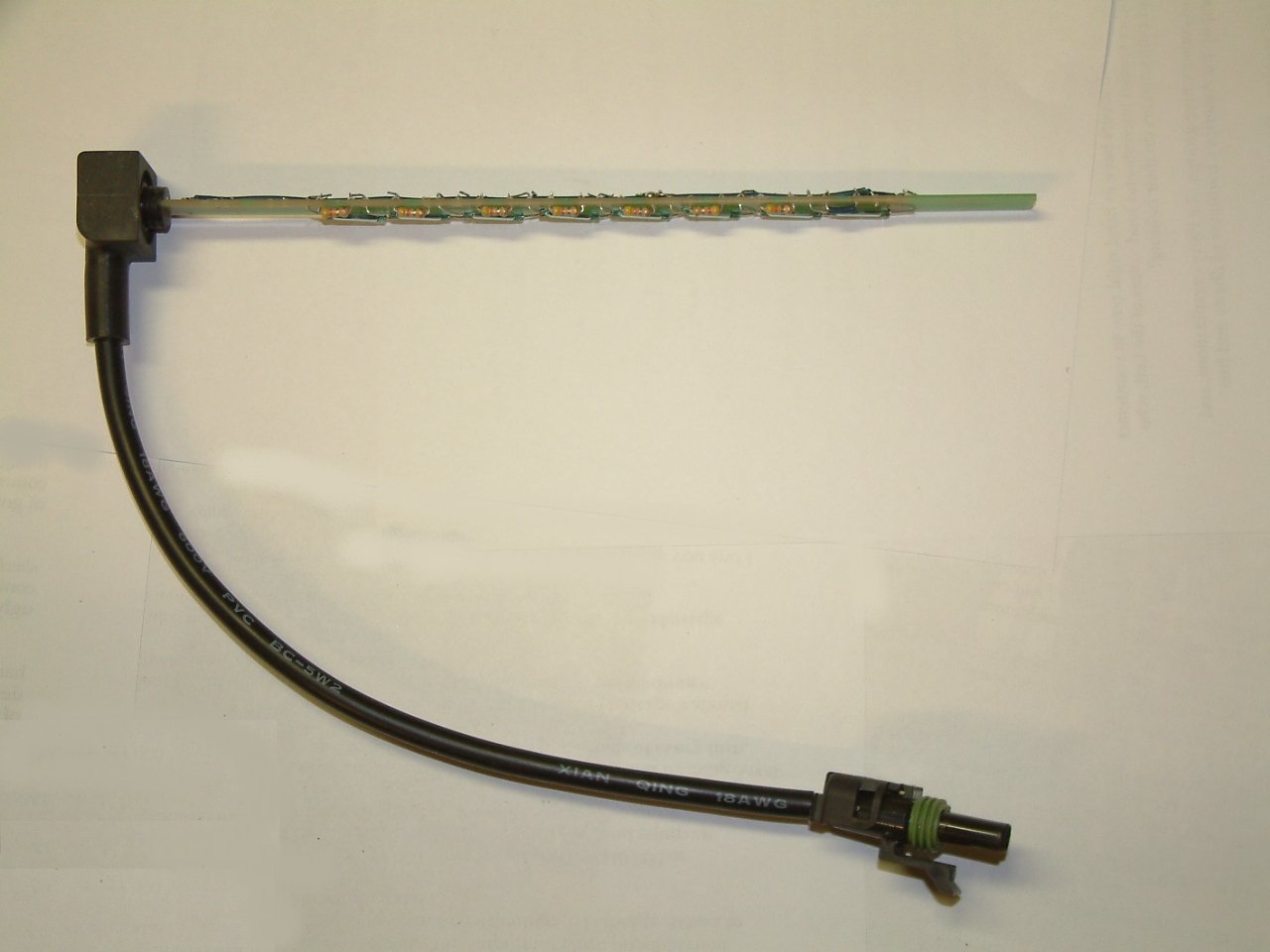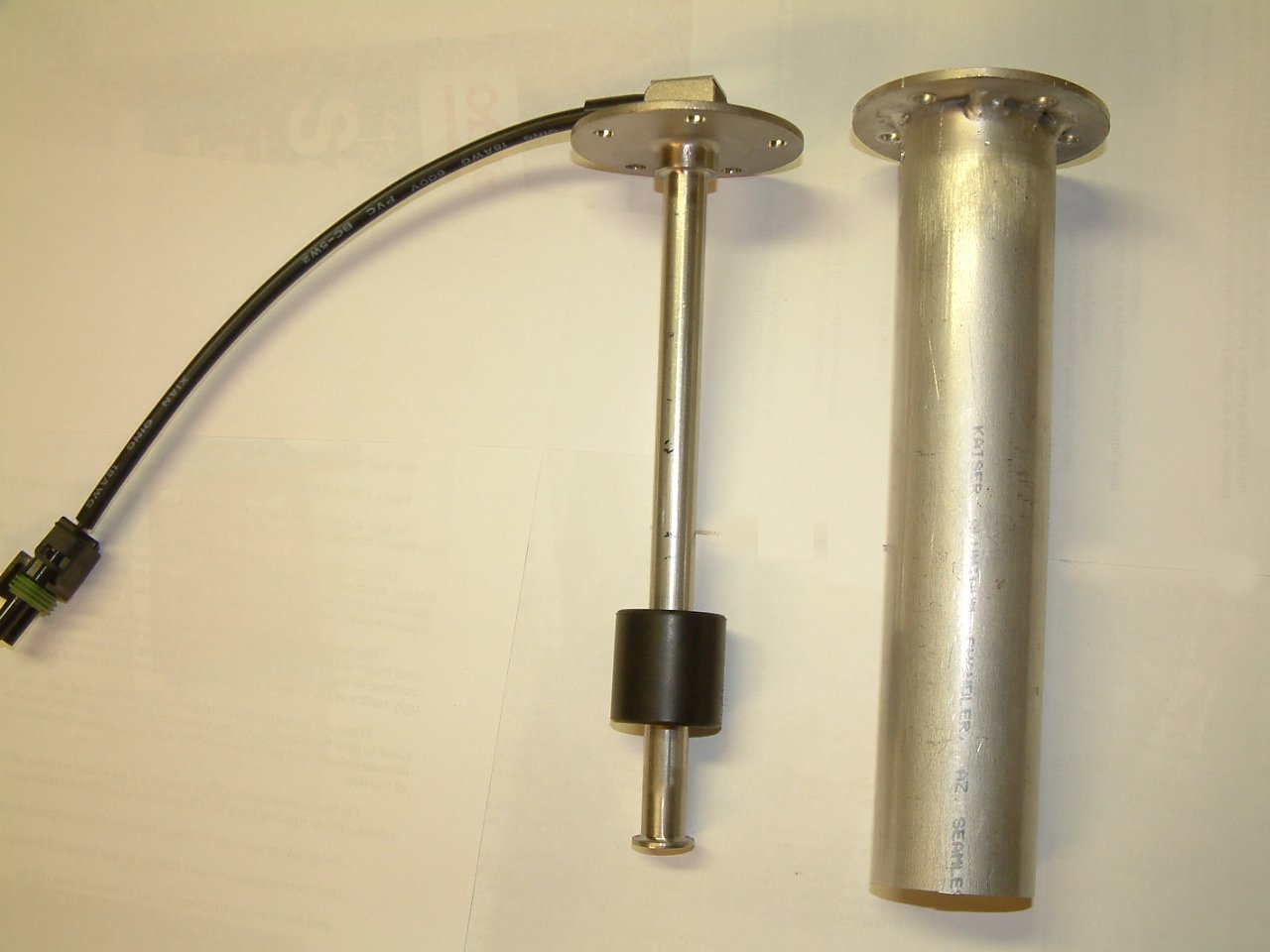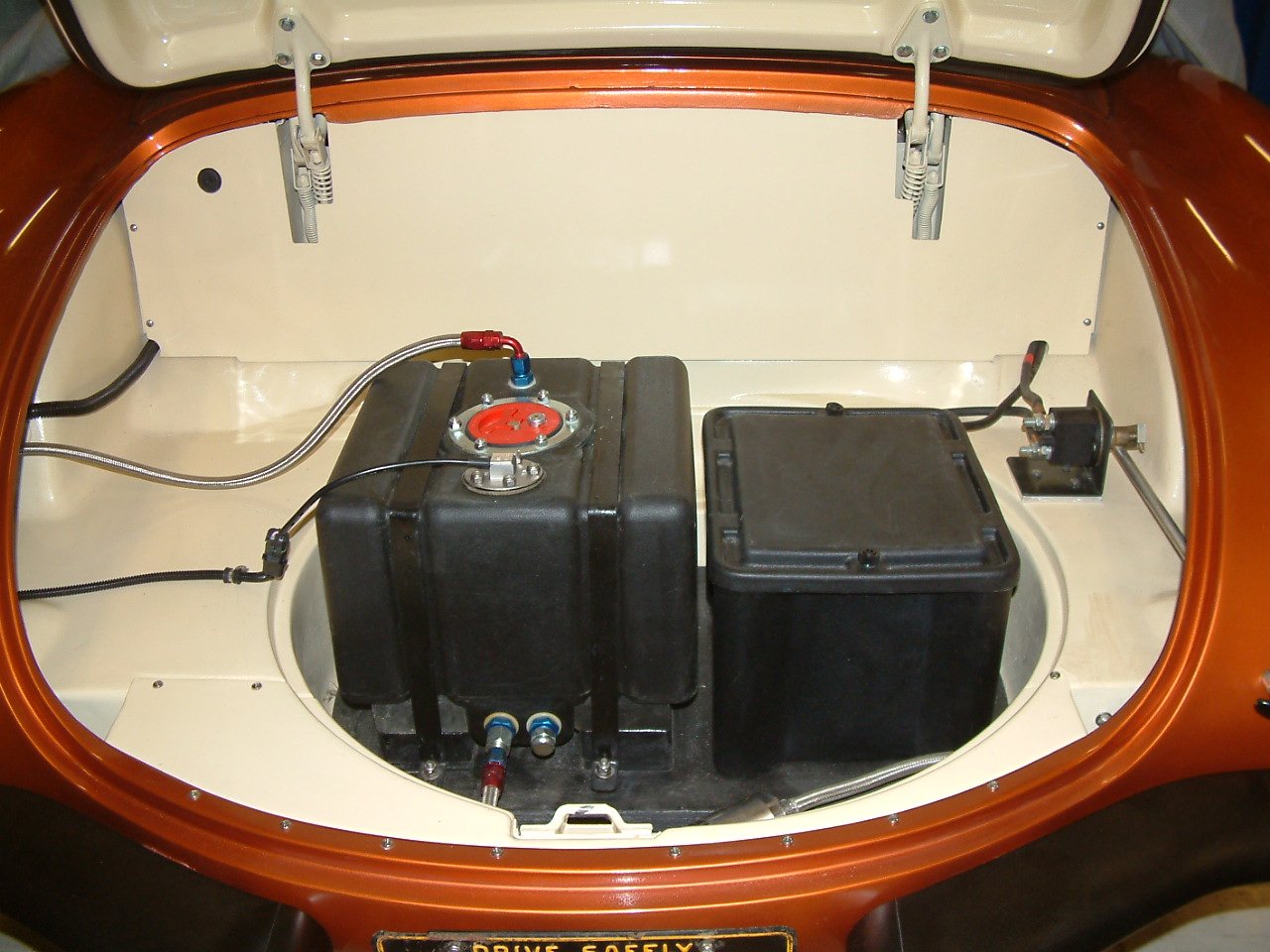
'59 Project October 2014
Installation of fuel cell sender
When I started the '59 project I planned on using the original fuel tank and sender, so when I replaced original dash gauges with Autometer gauges, I chose a fuel gauge with a 0-30 ohm range to match the original sender. Well, then I decided to remove the original tank to make room for a roll cage and use a fuel cell that would be placed in the spare tire well in the trunk. The fuel cell is rather small (5 gallons) and has foam inserts to prevent fuel sloshing, so there was no way the original sender would work. I looked at several of the tube type senders, one made by ISSPRO and one made WEMA (www.wemausa.com).
I contacted ISSSPRO and they would build a 0-30 sender for about $130. I also contacted WEMA but never received any information on what the cost would be for a 0-30 ohm sender. On ebay these senders sell for $30-$60 depending on the model. I chose the WEMA sender because it looked like it might be easier to modify for my needs and I bought an 8" long, model SSS8 from a boat supply house that was advertised on ebay for $35.

WEMA Fuel Sender

Taking the sender apart was surprisingly easy, just pop off the metal clip on top of the sender and then pry up the rubber cap around the wiring harness. The picture above shows what is inside the stainless steel tube on the sender.

A close up view of the circuit board shows a series of magnetic reed switches and resistors.
The black sleeve on the outside of the stainless tube contains a magnet and as it slides up and down as the fuel level rises and falls the switches connect more or less of the resistors to increase or decrease the resistance in the gauge circuit. Of course the sender that I purchased was for a newer gauge with a resistance of 240-33 ohms, so the resistors needed to be replaced and some rewiring was necessary to make the resistance increase as the fuel level decreased.
Another problem was that my fuel cell contained foam to keep the fuel from sloshing. The fuel sender that I purchased has an exposed sliding ring and would obviously not work with the foam. The solution to this problem was to make a protective tube that fit over the sliding ring to protect it from interference from the foam. A hole was also cut in the foam to allow the sender to easily fit into the tank.

Modified sender (left) and aluminum protective tube (right)

Sender installed in fuel cell